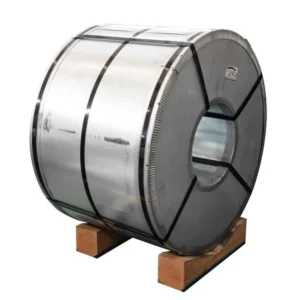Electrical Steel: The Essential Material Powering Modern Energy Systems
In today’s rapidly evolving energy landscape, the need for materials that can support the development of efficient, reliable, and sustainable power systems is more critical than ever. One such material is electrical steel, a specialized product used in the cores of transformers, electric motors, and generators. Its unique magnetic properties make it indispensable in a wide array of applications ranging from household appliances to large-scale power grid infrastructure.
This article explores the science, production, applications, and future of electrical steel, particularly within the context of energy developments in Europe and the Middle East. These regions are leading the way in infrastructure modernization, renewable integration, and smart grid deployment—all areas where electrical steel plays a vital role.
Understanding Electrical Steel
Electrical steel, sometimes called silicon steel or lamination steel, is engineered for electromagnetic applications. Unlike ordinary steel, it has been modified to reduce energy losses caused by hysteresis, eddy currents, and magnetic flux leakage. It achieves this through a controlled microstructure, silicon alloying, and specialized coatings.
There are two main types:
- Grain-Oriented Electrical Steel (GOES):
Designed for use in transformers. Its grains are aligned to enhance magnetic performance in a single direction, reducing core loss. - Non-Grain-Oriented Electrical Steel (NGOES):
Used in rotating machines like motors and generators. It has uniform magnetic properties in all directions.
The ability of electrical steel to minimize energy loss during magnetization makes it critical for any system that generates, transforms, or uses electrical energy.
Key Properties of Electrical Steel
Electrical steel is characterized by several magnetic and mechanical properties that set it apart:
- High Permeability:
Supports easy magnetization, improving energy efficiency. - Low Core Loss:
Reduces the conversion of electrical energy into heat during magnetic cycling, essential for transformers and motors. - Low Coercivity:
Minimizes the force required to reverse magnetization, ideal for AC systems. - High Electrical Resistivity:
Limits eddy current formation, further reducing energy loss. - Coated Surfaces:
Special insulation coatings prevent short circuits between laminations.
These properties ensure that machines using electrical steel operate more efficiently, generate less heat, and have longer lifespans.
The Manufacturing Process
The production of electrical steel is a complex, multi-stage process that requires precision and quality control:
- Hot Rolling:
Steel slabs are hot-rolled into thinner sheets. - Cold Rolling:
Reduces sheet thickness and aligns the grain structure, especially for GOES. - Annealing:
Heat treatment to reduce internal stresses and develop magnetic properties. - Decarburization:
Removes carbon to prevent magnetic aging. - Grain Orientation (for GOES):
Secondary recrystallization aligns grains for optimal magnetic performance. - Insulating Coating Application:
Applies a non-conductive layer to reduce eddy currents and enhance corrosion resistance.
Advanced production facilities also employ domain refinement technologies, laser etching, and AI-driven quality monitoring to produce high-performance electrical steel.
Major Applications of Electrical Steel
Electrical steel is the foundation of many devices and systems that are essential in modern life:
1. Transformers
Power and distribution transformers rely on grain-oriented electrical steel to handle high voltages and reduce transmission losses. Its use directly contributes to grid reliability and energy savings.
2. Electric Motors
Electric motors in everything from EVs to HVAC systems use non-grain-oriented steel. It allows them to operate more efficiently with less heat, making them ideal for industrial and commercial use.
3. Generators
Generators in power plants use electrical steel to convert mechanical energy into electrical energy with high efficiency.
4. Renewable Energy Equipment
Solar inverters, wind turbine generators, and battery energy storage systems rely on electrical steel to manage fluctuating loads and ensure stability.
5. Appliances and Electronics
Washing machines, refrigerators, compressors, and even high-efficiency lighting systems use electrical steel for quiet, reliable, and low-energy operation.
The Role of Electrical Steel in Europe and the Middle East
Europe: Sustainability and Grid Modernization
European countries are heavily investing in the modernization of their electrical infrastructure to support green energy goals:
- Smart Grids:
The EU is deploying smart transformers and efficient transmission equipment, all of which require electrical steel. - EV Expansion:
NGO electrical steel is being used to build lightweight, high-efficiency motors for electric cars. - Energy Efficiency Regulations:
European standards mandate the use of materials with low core losses in electrical appliances and industrial machines.
Germany, France, and Nordic countries have become major consumers of electrical steel, driven by sustainability policies and electrification.
Middle East: Urbanization and Renewable Expansion
The Middle East, while traditionally reliant on fossil fuels, is now actively embracing new energy strategies:
- Mega Cities:
Urban projects such as NEOM in Saudi Arabia use smart infrastructure built on efficient transformers and renewable energy systems. - Renewables Integration:
Countries like the UAE and Egypt are installing large-scale solar and wind projects, requiring generators and grid components made with electrical steel. - Industrial Electrification:
Oil and gas facilities are increasingly integrating electrified systems to reduce emissions, again depending on efficient electric motors.
In both regions, electrical steel enables reliability, efficiency, and compliance with international energy standards.
Recent Advancements in Electrical Steel Technology
Manufacturers and researchers are continuously improving the performance and versatility of electrical steel:
- Ultra-thin Gauges:
Reduce eddy current losses and improve cooling, ideal for compact equipment. - High Permeability Grades:
Allow for smaller core sizes and lighter machines. - Eco-Friendly Coatings:
Replace harmful chemicals with sustainable alternatives. - Precision Cutting & Domain Refinement:
Improve magnetic alignment, minimize vibration, and enhance energy transfer.
These innovations help electrical steel meet the growing demand for smaller, smarter, and more efficient electrical equipment.
Environmental Impact and Sustainability
Electrical steel supports environmental goals in several ways:
- Energy Saving:
Reduces energy consumption across applications by minimizing core and eddy current losses. - Lower Carbon Emissions:
Efficient transformers and motors reduce the overall power needed in buildings, factories, and transportation. - Recyclability:
Electrical steel can be recycled indefinitely without degrading magnetic performance. - Regulatory Compliance:
Most producers follow RoHS, REACH, and ISO 14001 standards, ensuring responsible production.
Sustainability, once a value-add, is now a requirement—electrical steel is a key enabler in meeting these new expectations.
Market Outlook
The demand for electrical steel is growing rapidly:
- Global electrical steel market size is projected to reach over USD 50 billion by 2030.
- Asia-Pacific remains the largest producer, but Europe and the Middle East are becoming increasingly important markets.
- Growth drivers include electric mobility, renewable energy integration, industrial automation, and aging grid infrastructure.
This robust growth trajectory is expected to accelerate as countries adopt stricter energy regulations and renewable energy goals.
Conclusion
Electrical steel is more than just a material—it is a foundation for building the next generation of power infrastructure. Its unmatched magnetic properties and adaptability make it essential for transformers, motors, generators, and countless other technologies that power the modern world.
As Europe and the Middle East push toward electrification, sustainability, and energy independence, electrical steel will remain at the heart of these transitions. Through continuous innovation and expanding applications, it will help industries achieve higher efficiency, lower emissions, and greater system reliability.
Whether supporting smart grids, electric vehicles, or renewable energy installations, electrical steel is not only powering systems—it’s powering progress.




